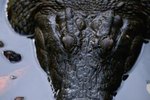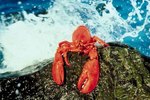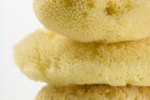
Pacific razor clams are soft-shell clams found on the sandy tidal beaches of the Pacific Ocean, from California to Alaska. Razor clams were named for their long, slender shells that resemble straight razors. Edible and meaty, Pacific razor clams are a culinary delight.
Razor Clam Shells
A hinged joint and a ligament connect two elongated calcium-based shell-halves. There is an elevated round spot near the shell's anterior end. Thin and brittle, the shell is covered with a glossy, yellowish skin that forms as the shell forms. Two abductor muscles close the shell, although Pacific razor clam shells don't close all the way because the siphon extends beyond the shell edge.
The Body
A Pacific razor clam has a mouth, a heart, kidneys, gills and an anus, but no head or eyes. Two short siphons are connected to the gills. The siphons are joined together except at the tips. A razor clam has a compressed foot that can extend from the side, pushing into the sediment. The foot then swells with blood to form an anchor.
Gills and Siphons
Pacific razor clams are bivalves; they filter water as they feed. They eat plankton and other small organic matter. A single clam can filter up to 50 liters of water daily. One siphon intakes water, which passes through the gills. The gills filter organic matter from the water, and the second siphon expels the water.
Circulatory System
A clam has an open circulatory system, which means watery blood, containing nutrients and oxygen, surrounds the organs. This system relies on the auricle, ventricle and pericardium. Vessels carry blood from the heart into the body tissues, where it exits the arteries, passing over various organs to collect in large spaces. The blood then passes through the kidney and gills before returning to the heart.
References
Photo Credits
-
Comstock Images/Comstock/Getty Images
Writer Bio
Karen Mihaylo has been a writer since 2009. She has been a professional dog groomer since 1982 and is certified in canine massage therapy. Mihaylo holds an associate degree in human services from Delaware Technical and Community College.




